A prima facie case of negligence occurs when a person or group fails to fulfill their duty of care to another person. Their actions are not what a reasonable person would do under the same circumstances, leading to injuries and loss.
In Latin, “prima facie” means either:
- On the first impression, or
- At first sight
The difference between prima facie cases and other negligence cases is the type of evidence presented. Prima facie cases involve evidence that proves negligence so strongly that it requires a trial just from first impression.
Prima facie evidence most often occurs in personal injury cases where a negligent party caused someone’s injuries through their actions. Types of common prima facie cases include:
- Hit and runs
- Slip and falls
- Premises liability
- Dog bites
Even though your evidence seems obvious at face value, you need a personal injury attorney to verify your case. A legal professional handling the paperwork while negotiating with insurance adjusters will ease your stress during this trying time. Also, their services are free until your settlement arrives in the mail.
Free Personal Injury Evaluation
Weren't at-fault for your accident? Click here to speak with a nearby attorney for FREE about your personal injury claim.
or call (888)-927-3080
What is Required to Establish a Prima Facie Case of Negligence?
Just like all negligence cases, to establish a prima facie case of negligence, you have to prove the following:
- The defendant owed you a duty of care
- They breached that duty
- Their breach of duty caused your damages
- Your damages are verifiable and measurable (like medical records or repair bills)
Proving a breach of duty changes from case-to-case as prima facie cases of negligence are all different. Some courts may use the Hand Formula to determine whether a duty of care was violated in your case.
The Hand Formula For Prima Facie Cases
The Hand Formula, established by United States v. Carroll Towing Co., is an equation courts use to determine a breach in duty of care. The formula for cases involving negligence is as follows:
B<PL
B = Burden of precautions
P = Probability of loss
L = Gravity of personal loss
If the burden of precautions is less than the probability of loss times the gravity of personal loss, the defendant was negligent and violated their duty of care. If the burden of precautions is greater than their probability and gravity of loss, they did not breach their duty of care.
How to Prove Duty of Care
Duty of care refers to the legal responsibilities one must perform to promote safety for themselves and others. An example of one’s duty of care is stopping when the street light turns red, or yielding to pedestrians on a crosswalk.
There are various ways a legal duty of care is established in the United States:
- Through an already established statute
- Previous court rulings
- General obligations a reasonable person follows to promote safety for others
You can prove a breach in duty by showing what responsibilities that person or entity held in that situation. You then prove how their actions fell short of their responsibilities, resulting in your damages.
Who Has the Burden of Proof in Prima Facie Cases?
It is the plaintiff who has the burden of proof in prima facie cases. They must present evidence that shows more likely than not that the defendant acted with prima facie negligence.
The plaintiff must use enough evidence to prove that they’re at least 50% likely that the defendant acted negligently. You don’t need to prove without a doubt that they acted negligently, only more than 50%, depending on your state’s negligence laws.
You can prove your case using the following examples of prima facie evidence:
- Police reports
- Witness reports
- Photos of the accident and injuries
- Repair bills
- Medical bills
These are only examples, but any form of evidence to prove duty of care and their breach of duty will suffice. Talk to a personal injury attorney to consider your next actions and what evidence may suffice for your case.
Examples of Prima Facie Cases of Negligence
Prima facie negligence cases occur frequently in personal injury cases where someone harmed another due to their negligent actions. Previous statutes may have been established to prevent these injuries, but negligent behavior may continue to occur.
The following examples are some of the most common personal injury cases involving prima facie negligence:
- Car accidents
- Slip and falls
- Premises liability
Car Accidents
There are numerous statutes preventing negligent behavior on the road, like sideswipes and driving slower at night. Not only are there defined expectations for every driver, but there are various ways to prove negligence when it occurs.
You can request footage from street cameras during an accident on a main street. Witnesses can give their testimonies to further establish liability and a duty of care. Police reports offer an objective view of the accident along with diagrams and reports from the officer.
Slip and Falls
A slip and fall injury most likely happens from preventable causes like a wet floor the property owner should’ve dried. Safety hazards should have proper signage notifying the public of potential harm that could occur in their property.
Premises Liability Injuries
Premises liability does not stop at slip and falls, but it can extend to workplace safety, dog bites, or negligent security. Property owners have a duty to notify the public of potential safety hazards. If they fail to properly notify the public, they can be liable when an injury occurs.
Types of Damages in a Prima Facie Case of Negligence
You may earn the following compensatory damages after a prima facie case of negligence. These forms of compensation are meant to “make whole” the losses you sustained from an accident:
If the defendant was found grossly negligent in their actions, you may qualify for punitive damages on top of your originally owed amount. Punitive damages are meant to punish particularly egregious behavior so further dangers do not happen again.
Find a Personal Injury Attorney With LegalASAP
A personal injury attorney simplifies the legal process while raising your chances of a higher settlement. A prima facie case of negligence is not easy to verify, but the right lawyer can help you through every step of the process.
LegalASAP has 500+ law firms located throughout the United States, eager to serve you while organizing your case. If you need an attorney to handle your personal injury case, call 888-927-3080 or fill out the short evaluation form below:
Jan Reburiano is a content writer and SEO specialist for law firms focusing on personal injury, disability, employment law, among other practices. He has written and edited numerous articles and created commercial spots for broadcasters that you can find in his LinkedIn. Jan currently lives in Los Angeles, California while writing for clients from around the United States.


